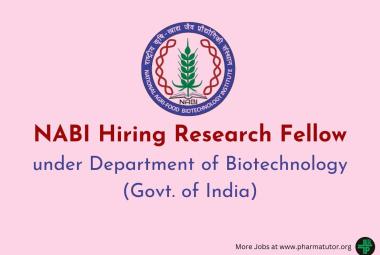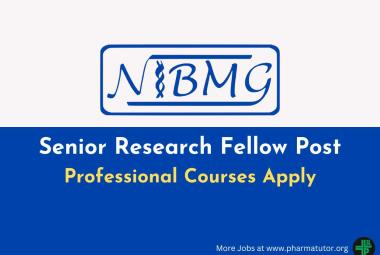 About Author: Bharat Lal
About Author: Bharat Lal
MSIP,
Delhi
STUDY OF DRUGS ON IMMUNE SYSTEM: IT MAY STIMULATE THE IMMUNE SYSTEM OR SUPPRESS THE IMMUNE SYSTEM. STIMMULATION IS REQUIRE FOR DISEASE LIKE AIDS AND SUPPRESSION IS REQUIRE FOR ORGAN TRANSPLANTATION.
[adsense:336x280:8701650588]
2 major components of the immune system
* INNATE
Physical – skin, mucus membrane
Biochemical – lysosyme
Cellular – macrophages, neutrophils
* ADAPTIVE
HUMORAL immunity -Antibodies
CELL MEDIATED immunity- T-lymphocyte
Immunosuppressive Drugs
CALCINEURIN INHIBITORS
- Cyclosporin (ciclosporin)
- Tacrolimus
ANTIMETABOLITES
- Azathioprine
- Mycophenolate mofetil
ANTIBODIES
- muromonab CD3
- antithymocyte globulin
- IL-2 – receptor antagonists(Bashiliximab,Daclizumab)
GLUCOCORTICOIDS
- prednisone
- methylprednisone
- prednesolone
Cyclosporine
Mechanisms
* cyclosporin + cyclophilin → complex → calcineurin↓→ dephosphorylation of nuclear factors of activated T cells↓ → gene transcription↓ → IL-2,3,4↓, TNF-α↓, IFN-γ↓
* cyclosporin → TGF-β↑ → proliferation of T cells induced by IL-2 ↓, cytotoxic T cells↓
Adverse Effects
* Nephrotoxicity
* hepatotoxicity
* Neurotoxicity
* secondary infection: viral infection
Pharmacokinetics
* variable, incomplete oral absorption
* extensive hepatic metabolism, excreted in bile
* used alone or in combination with prednisone and azathioprine or other antineoplastic drugs
* Clinical Uses
* Organ transplantation
* Autoimmune disorders
Tacrolimus
10-100 times more potent than cyclosporine
Mechanisms
similar to cyclosporine
-cyclosporine binds to cyclophilin
-tacrolimus binds to FK binding protein
-resultant complexes inhibit calcineurin (cytoplasmic phosphatase)
Pharmacokinetics
* oral or intravenous administration
* oral administration -- peak concentration: 1-4 hours
* IV administration: half-life -- 9-12 hours
* Drug Metabolism: hepatic P450 system
Uses
Tacrolimus: inhibits immune responses (10-100 times more potent of cyclosporine) approved for use in liver transplantation
Adverse/Toxic Effects:
* nephrotoxicity
* neural toxicity
* hyperglycemia (requires insulin supplementation)
* gastrointestinal disturbance
Mycophenolate mofetil
Mechanism
* inhibits inosine monophosphate dehydrogenase involved in de novo synthesis of guanosine nucleotide in the T-cell & B-cell
* selectively suppressess T- and B-cell proliferation
* Also suppresses some macrophage functions (may explain anti-inflammatory actions)
Pharmacokinetics
oral absorption and hepatic metabolism
Adverse Effects
Vomiting, diarrhoea, leukopenia and CMV infections
increased incidence of lymphomas and other malignancies
Uses
kidney & heart transplantation
Azathioprine
Prodrug ,first converted to 6-mercaptopurine
Mechanism
Inhibit purine synthesisà interferes with nucleic acid metabolism à inhibits cellular & humoral responses
Toxicities:
* Bone marrow suppression
* GI disturbances: N&V, diarrhea
* Skin rashes, drug fever, hepatic dysfunction
* Azathioprine
Uses
Kidney and other graft rejection but less effective then cyclosporin
Pharmacokinetics
6MP undergo metabolism in the liver to the 6- mercaptopurine derivative
Muromonab CD3
muromonab is a monoclonal antibody against CD3 glycoprotein located near to the T-cell receptor on helper T-cells
muromonab CD3 has been used as induction therapy together with corticosteroids & azathioprine with delayed used of cyclosporine in seqential regimen for organ transplantation .This serve to postpone potential nephro & hepatotoxicity
Mechanism of action
Destruction of T-lyphocyte
binding of muramonab CD3 to the cd3 antigen obtruct the binding of MHC ii – antigen complex to the t-cell receptor.
Adverse Effects
- Cytokin release syndrome
- initial doses of moromonab cd3 are associate with flu like symptoms: chill, rigor ant wheezing
Antithymocyte globulin(ATG)
Thymocyte are the cells that dovelop in the thymus & serve as T-cell precursor.
It is potent immunosuppressant & has been used primarily to suppress allograft rejection, especially in steroid – resistant cases or is combine with them
Mechanism of action:
Destruction of T-lymphocyte
the antibody bind to the surface of circulating T-lymphocytes which then undergo various reaction , such as complement mediated destruction & apsonisation.
Adverse Effects
Chills and fever ,leukopenia & thrombocytopenia , infection due to cytomegalovirus (CMV)or other virus & skin
Basilimax & Daclizumab
act as IL-2 receptors antagonist
Corticosteroid
MOA:
inhibit T-cell proliferation & T-cell dependent immunity
Inhibit expression of genes encoding cytokines
Inhibit production of inflammatory mediators
Affects cell-mediated immunity more than humoral immunity
Continuous administration:
↑ fractional catabolic rate of IgG
Prednisone used most often orally
Methylprednisolone used parenterally
Prednisolone Uses
Organ transplantation
Autoimmune disorders
Modulate allergic reactions – asthma
Adverse effects:
GI bleeding
adrenal suppression
fluid retention
diabetes
superinfections
Immunostimulatory Cytokines
Interleukins
IL-2 (enhance antitumor actions of cytotoxic T cells and NK cells)
Interferons (uses)
alpha (anticancer uses)
beta (relapsing type multiple sclerosis)
gamma (chronic granulomatous disease)
Other Immunostimulants
Thymic Hormones
Improve primary immune deficiency in children
Synthetic Stimulants
Levamisole stimulates phagocytosis and T cell production of cytokines
Adjuvants of bacterial origin
BCG is viable strain of Mycobacterium bovis that enhances macrophage activity
BCG used for bladder cancer and melanomas
Reference ID: PHARMATUTOR-ART-1021
FIND OUT MORE ARTICLES AT OUR DATABASE









